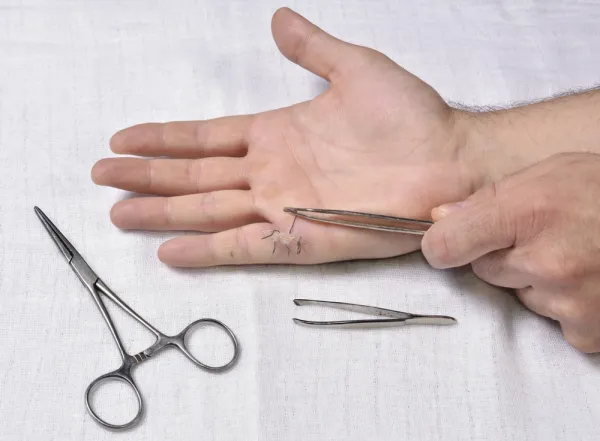
Injury code hinges on venomous/non-venomous savvy -- and more.
Think a tick is venomous? That error will land you with the wrong ICD-9 code(s).
Get the scoop you need to nail all possible diagnoses for a tick removal or tick bite codes with this guide.
GoWith 910-919 for Nonvenomous
To support a tick bite or tick removal E/M or foreign body removal (FBR), the first diagnosis code you'll need is the injury code.
In the ICD-9-CM index, if you look up "bite: insect," you're faced with a dilemma. Is a tick venomous or nonvenomous? "Ticks can infect you but they don't have venom like an ant mite," notes Jeffrey F. Linzer Sr., MD, associate medical director of compliance and business affairs for the division of pediatric emergency medicine, at Children's Healthcare of Atlanta at Egleston.
That information lets you choose "bite: insect, nonvenomous," which directs you to the site-specific superficial injury codes (910-919). If you had incorrectly classified a tick as venomous, you would have ended up with a nonspecific diagnosis of 989.5 (Toxic effect of other substances, chiefly nonmedicinal as to source; venom).
Choose 910-919's third digit based on the bite's location.
For instance, a bite on the forearm goes to "913.4 or 913.5 (Superficial injury of elbow, forearm, and wrist ...) dependent on whether it is infected (5) or not (4)", says Mary Forte, business administrator at Sewickley Valley Pediatric and Adolescent Medicine PC in Pennsylvania.
One detail tells you whether you should call on one or two 910-919 codes. Ask, "Does the encounter involve tick removal?"
If the answer is "Yes", you should use two injury diagnoses. "For simple tick removal, go with 910-919 with .6 for superficial foreign body and .4 for [a noninfected] insect bite," Linzer instructs.
For a bite with no tick, drop the foreign body code (91x.6).
Indicate Lyme Concern Using This Tool
Because Lyme disease or symptoms of it don't usually show up until seven to 10 days after the bite, many practices don't routinely screen at the initial tick bite or tick removal encounter for the disease. How do you prepare the insurer in the event the patient does contract Lyme disease?
"If there is a concern about Lyme exposure, then use the appropriate V code to indicate exposure," Linzer says. Report Lyme exposure with V01.89 (Contact with or exposure to other communicable diseases).
For a payer that accepts E codes, you may also assign an E code to explain the injury's cause. "For easy coding of your external causes, in [ICD-9-CM] volume 2 section 3 you can find the Alphabetic Index to External Causes of Injury and Poisoning," says Victoria L. Arendt, CPC, at Flagstaff Pediatric Care in Arizona.
If you look up "Bite: insect (nonvenomous)," the index refers you to E906.4. To indicate that a nonvenomous arthropod (an invertebrate such as an insect lacking a backbone) caused the injury, you could add E906.4 (Other injury caused by animals; bite of nonvenomous arthropod), agreed billing and clinical staff at Sewickley Valley Pediatric and Adolescent Medicine.
Example: A patient presents with a tick in her calf. The physician evaluates the spot, asks questions about Lyme disease-related symptoms, removes the tick using probing tweezers, and decides to hold off on antibiotic treatment since the patient has no signs of Lyme disease. The claim could include these codes:
• 916.6 (Superficial injury of hip, thigh, leg, and ankle; superficial foreign body [splinter] without major open wound and without mention of infection) for the removal of the superficial foreign body from the leg
• 916.4 (... insect bite, nonvenomous, without mention of infection) for the bite
• E906.4 (optional) to indicate an injury from a nonvenomous insect.
If the patient later returned and the doctor diagnosed the patient with Lyme disease from an infected tick bite, you would report only the disease (088.81, Lyme disease), Linzer instructs. "It's sort of a given that it came from a tick."
